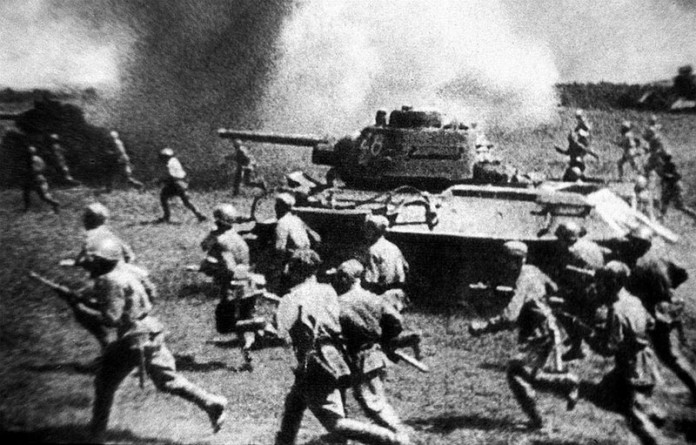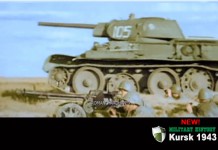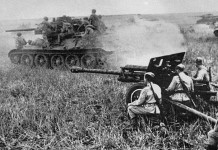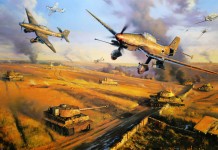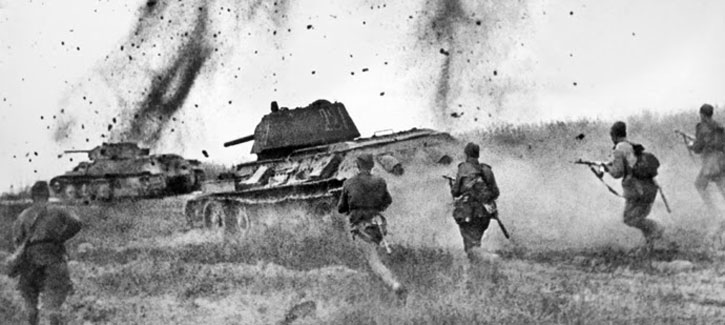
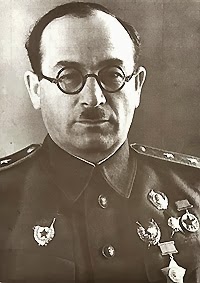
While General Hausser’s SS divisions prepared for battle, there was feverish activity in the Soviet camp as well. On July 11, the elite Fifth Guards Tank Army, commanded by Lt. General Pavel Rotmistrov, who at the age of 42 became one of the youngest Soviet generals, had also moved his massive force into the Prokhorovka area, having force-marched 200 miles in four days from his deployment with Konyev’s Steppe Front to the East.
What lay a head, was to become the most savage and massive armor encounter, fought in such a relatively confined battlefield. The ruthless bloody carnage, under which this battle was fought, but the confusion also creating one of great myth make-believes of the War in Russia, to be disputed to this day. The battle was fought across a stretch of land ranging in an arc of 20 kilometers to the west and south of Prokhorovka.
Generally open country, but hilly, terrain around a vital railroad, with groups of woods providing shelter for tank destroyers, a near pergect scene for a great tank battle. Seen in detail, the countryside around Prokhorovka, while relatively open to mechanized operations, was divided into compartments by the Psel and Lipovyi Donets Rivers and adjacent ridge lines, rendering good hide-outs for hull-down positions for long range guns. With the massing of armor and confused in-fighting that followed, this was of limited gain, as proved by the morrow.

Carnage at Prokhorovka
The battle may best be described by one of the participants.
Down off the west slopes before Prokhorovka came the massed armor of five tank brigades from the two Soviet tank corps. They had been ordered to approach at high speed. What followed became a horrifying spectacle, engulfed in dust smoke and fire, lasting throughout the day. As one Russian tank commander remembers: “The sun came to our aid as we raced into the battle. It blinded the Nazi tankers, making their periscopes useless. The German Tiger giants seemed confused, their drivers trying to change direction, but we were on to them, closing fast, making their long range 88mm guns ineffective, our own 76,2mm guns tearing great holes into their side armor. Ammunition exploded inside, from the blast the ton heavy turrets were torn off and flung away. The point-blank fighting became totally disarrayed, no control possible as it was each tank fighting for his life in a swirling melee caught in a murderous slogging-match. Soon the entire battlefield was littered with smoldering steel coffins, that had been proud vehicles of war only seconds before. Black thick oily smoke covered the valley, leaving not a blade of grass green.”
But the battle was far from over yet.
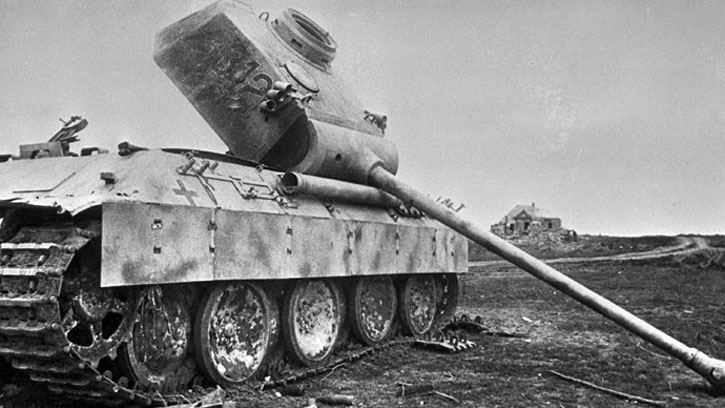
The Reckoning
The Prokhorovka battle ended at a draw with heavy losses on both sides. However, after the battle was over, the Soviets held the area and were able to recover their disabled tanks and wounded crews.
While it makes a dramatic story, nearly all the stories of this battle scenario are essentially myth. Steel certainly clashed head on with Steel, but the numbers, which both sides claimed destroyed was exaggerated and there was no “ramming” of Tigers by Soviet T-34 tanks either, as some of the Russian sources claim.
Certainly when tanks are fighting in such a confined battlefield, with little maneuver possible, there would have been close clashes and display of heroics by very brave soldiers giving their utmost under most difficult conditions. But under the heat of battle these things happen and are unfortunately much later are exploited for quite different purpose by ruthless and egocentric politicians, which never fail.
On 16 July, German forces withdrew to their start line. Severely depleted, the Germans then had to face a heavy Russian offensive launched to smash the German forces in the Belgorod–Kharkov area which was launched on 3 August.
Although the Battle at Kursk may not have been the “turning point” of the war, it does represent the point where the Red Army took away, for good, the initiative from Hitler’s War in Russia. From now on, hard fighting was still ahead, but the road was now clearer in the single direction of Berlin.
There is a tremendous amount of misunderstanding about how CITADEL progressed. This misunderstanding is fueled by oft-repeated, but false, descriptions of the combat that took place. The typical claim that the Battle of Prokhorovka was the biggest tank battle ever fought is also misleading, as there were tank battles fought in which no less numbers of tanks took part. To mention only one of them, at Brody in June 1941, soon after the beginning of the German Barbarossa invasion, several thousand Russian tanks, including some of the first T-34, fought over a thousand German Panzers, with huge losses on both sides.
Thirty years later in 1973, the so-called Yom Kippur War, cost nearly 3000 tanks , with the Syrian army losing 4,000 men and 1,100 tanks, the Egyptian Military lost 10,000 men and over a thousand tanks, while the IDF lost 2500 men and 800 tanks, These losses were based on real numbers and not myth, so it might well be that the Arab-Israeli war in 1973 became the greatest tank campaign in modern history.

Previous chapters:
- Part I: When Humans fought Steel while Steel clashed Steel
- Part II: The Soviet Defense in Depth: Creating Fortress Kursk
- Part III: The German Plan: Simple but Unrealistic to Succeed
- Part IV: The northern salient – Walter Model’s Army Sector
- Part V: Back to the Southeastern Sector
- Part VI: Carnage at Prokhorovka

